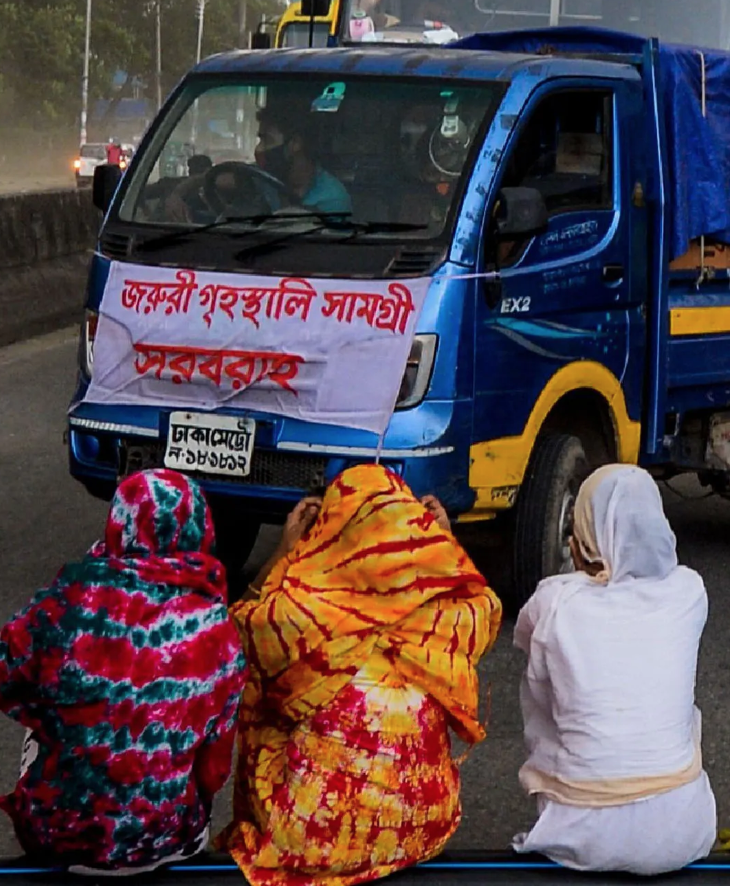
The number of people living in modern slavery has risen by 10 million since 2018, according to the latest findings from Walk Free’s Global Slavery Index, bringing the count to an estimated 50 million people globally.
One thing that hasn’t changed? “Fashion’s role in that number,” says founding director Grace Forrest. Modern slavery is defined in the report as “situations of exploitation that a person cannot refuse or leave because of threats, violence, coercion, deception, and/or abuse of power”. This involves their freedom being systematically removed, and is present across industries, with some new industries entering the top five most vulnerable to modern slavery, Forrest says. “Fashion has stayed the same in terms of risk,” she adds, “or worsened.” Garments are currently the second highest-valued at-risk import for G20 countries at $147.9 billion, according to the index, out of a total of $468 billion of all imported goods by the G20.
The index, which collates data from recent research across surveys, journal articles, indexes and reports and offers an overview of risks (based on vulnerability to modern slavery for 160 countries plugged into a risk model) and recommendations across industries, spotlights the risk of exploitation at each stage of the garment supply chain. Walk Free breaks these stages down as follows: raw materials; textiles and inputs; manufacturing; and brands and buyers.
“It’s a sharp and strong call to action for brands to understand that modern slavery is permeating their supply chains at every level, and that ethical production remains the exception rather than the rule,” Forrest says. “Exploitation is the industry standard. In 2023, so much of this industry is underpinned by rampant exploitation of both people and the planet.”
Gulzire Auelkhan, a Khazakh woman in forced labour in the Uyghur region, is quoted saying: “I was sent to the factory, a kind of sweatshop, I suppose, making gloves… The products were exported abroad, we were told, and sold to foreigners. You made some money, but if you stopped working, they sent you back to the camp. So, there wasn’t much of a choice.”
This situation in China has ignited action from some governments and brands. Almost a year ago, Uyghur Forced Labor Prevention Act came into effect in the US. Back in 2021, Chinese tech giant Tencent and Burberry cut ties amid heightened global tension.
While the index seeks to inform both brands and consumers, the onus is on governments to implement regulation, Walk Free’s Forrest says. Recommendations for governments to increase regulation include: strengthening supply chain transparency regulation; conducting regular labour inspections; ensuring the national minimum wage meets a livable one; preventing the import of goods made with forced labour; and providing avenues for redress for exploited workers.
There’s a government response index embedded within the report. Each country listed comes with a government response and suggested strategic action (solutions were consulted on and developed in collaboration with modern slavery survivors). Certain regions have recently passed legislation mandating that companies be more transparent about their supply chain practices — fashion brands included. California, Australia, the UK and EU require large companies to report on their supply chain processes. Forrest highlight’s Germany’s human rights due diligence law, which requires large companies to carry out human rights and environmental due diligence on their business and its suppliers, as one of particular note. It’s proactive harm prevention, versus reactive measures like the UK and Australia implement.
Fashion still falls short. In December 2022, Walk Free and online data platform WikiRate reviewed 97 statements submitted by top garment companies and investors (they were required to submit these under the Modern Slavery Acts of the UK and Australia). The review concluded that the majority of brands failed to address the modern slavery risks prevalent in the garment sector.
Read more – Vogue Business
